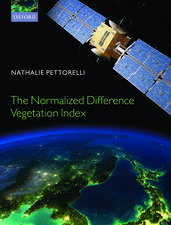Landscapes under Pressure: Theory and Practice of Cultural Heritage Research and Preservation
Editat de Ludomir R. Loznyen Limba Engleză Hardback – 27 mar 2006
| Toate formatele și edițiile | Preț | Express |
|---|---|---|
| Paperback (1) | 387.75 lei 6-8 săpt. | |
| Springer Us – 18 dec 2007 | 387.75 lei 6-8 săpt. | |
| Hardback (1) | 645.79 lei 6-8 săpt. | |
| Springer Us – 27 mar 2006 | 645.79 lei 6-8 săpt. |
Preț: 645.79 lei
Preț vechi: 759.76 lei
-15% Nou
Puncte Express: 969
Preț estimativ în valută:
123.57€ • 134.65$ • 104.13£
123.57€ • 134.65$ • 104.13£
Carte tipărită la comandă
Livrare economică 23 aprilie-07 mai
Preluare comenzi: 021 569.72.76
Specificații
ISBN-13: 9780387284606
ISBN-10: 0387284605
Pagini: 259
Ilustrații: XX, 259 p.
Dimensiuni: 156 x 235 x 18 mm
Greutate: 0.57 kg
Ediția:2006
Editura: Springer Us
Colecția Springer
Locul publicării:New York, NY, United States
ISBN-10: 0387284605
Pagini: 259
Ilustrații: XX, 259 p.
Dimensiuni: 156 x 235 x 18 mm
Greutate: 0.57 kg
Ediția:2006
Editura: Springer Us
Colecția Springer
Locul publicării:New York, NY, United States
Public țintă
Professional/practitionerCuprins
Theory.- Place, Problem, and People: Issues in Interdisciplinary Cooperation.- Place, Historical Ecology and Cultural Landscape: New Directions for Applied Archaeology.- The Colonial Southwest: Pueblo Landscapes and Spanish Shared and Separate Landscapes.- A New Landscape for Cultural Heritage Management: Characterisation as a Management Tool.- The Idea of the Site: History, Heritage, and Locality in Community Archaeology.- Methodology and Practice.- Changing Places: A Cultural Geography of Nineteenth-Century Zuni, New Mexico.- Envisioning Future Landscapes in the Environmentally Sensitive Areas of Scotland: An Introduction.- Critical Data for Understanding Early Central European Farmers.- Alternative Archaeologies of the Cold War: The Preliminary Results of Fieldwork at the Greenham and Nevada Peace Camps.- Archaeological Practice in Large Transportation-Related Corridors: The I-270 Archaeological Mitigation Project.- Legal, Economic and Political Constrains of Cultural Heritage Preservation Programs.- Private Sector Archaeology: Part of the Problem or Part of the Solution?.- Protection, Maintenance and Enhancement of Cultural Landscapes in Changing Social, Political and Economical Reality in Poland.- Cultural Heritage Preservation and the Legal System With Specific Reference to Landscapes.
Textul de pe ultima copertă
There is a growing realization that human intent and activity are not easily separated from natural forces in the shaping of landscapes. The pervasive Western dichotomy of culture and nature has proved to be a poor basis for scientific research and long-term environmental management. Humans have been major factors in environmental change for thousands of years using fire, intensive hunting and a wide range of agricultural strategies to transform most ecosystems on the earth long before the Industrial Revolution. All these activites contribute to the making of cultural landscapes which incorporate elements generally classified in two groups: tangible empirical evidence of human behavior, and intangible, symbolic meanings.
This book investigates the newly emerging scope of interests and project agendas to investigate and preserve cultural landscapes. It presents the historic, archaeological, ethnographic, and environmental traditions of cultural landscape study and the attempts to reconstruct and analyze the complex processes of cultural changes through prehistoric and historic times.
The "guiding light" of the book is that the fullest understanding of a cultural landscape will materialize through interdisciplinary cooperation, which should involve an ecological approach with historical ecology as the guiding tool, applied archaeology, and environmental planning. The book addresses issues of interest to policymakers-makers and planners and those who investigate cultural landscapes.
This book investigates the newly emerging scope of interests and project agendas to investigate and preserve cultural landscapes. It presents the historic, archaeological, ethnographic, and environmental traditions of cultural landscape study and the attempts to reconstruct and analyze the complex processes of cultural changes through prehistoric and historic times.
The "guiding light" of the book is that the fullest understanding of a cultural landscape will materialize through interdisciplinary cooperation, which should involve an ecological approach with historical ecology as the guiding tool, applied archaeology, and environmental planning. The book addresses issues of interest to policymakers-makers and planners and those who investigate cultural landscapes.
Caracteristici
An interdisciplinary approach to landscape archaeology will be interest to archaeologists (especially cultural heritage managers), historians, ethnographers, environmentalists and ecologists Includes supplementary material: sn.pub/extras












